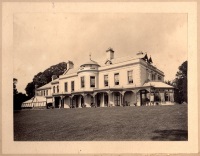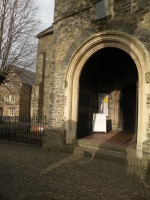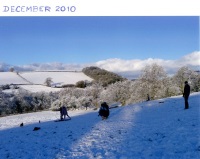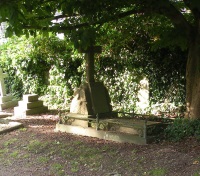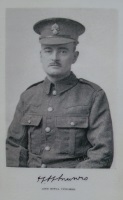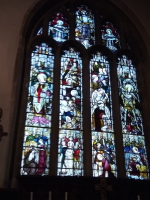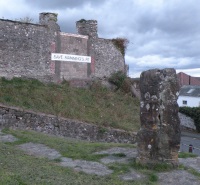| Home |
Save
Manning's Pit Petition - now closed |
About the
Exhibition |
Benjamin Manning |
Saki |
F R Lee |
Henry Williamson |
Timeline |
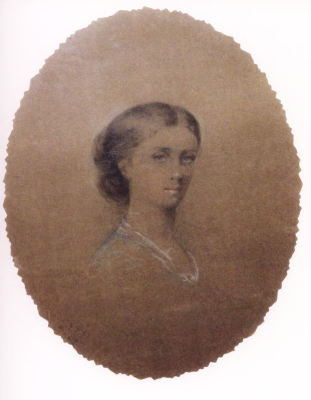 |
|
|
Broadgate House in the Hibberts time -
with thanks to the Henry Williamson Society for the photograph |
|
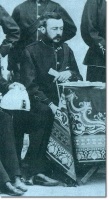 Click on the image above for more about his career in the Army, and a full size image. |
|
|
In 1861 Hugh Robert Hibbert and Sarah Catherine Lee were married in London. How they met, we do not yet know, but both families were successful and wealthy, and as a war hero Hugh Hibbert would have made a dashing figure in English Society at that time. According to the
British Empire website Colonel Hibbert was
Commanding Officer of the 7th Battallion from December 1863 until he
retired in October 1871. This Battallion went
to India during this time. Whereas Saki's
father, who worked for the Indian Imperial Police, was
only able to come home once every 4 years, it appears
that Colonel Hibbert made more frequent visits home,
by the number of children that were born to the
family, unless of course Sarah travelled to India as
well on occasions - we have just (2019) received
the information that one of their daughters, Essex
Mary, was born in India, so there is some evidence
that she did.
|
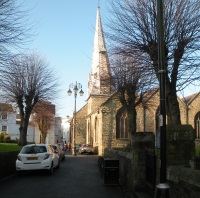 St. Peter's Church in Barnstaple, a photograph of the memorial window is on the right. This window is directly opposite St. Anne's Chapel, which has a plaque on its outside wall in memory of F R Lee's brother, the architect Thomas Lee, who was drowned at Mortehoe. |
|
||||
 Exeter and Plymouth Gazette May 16, 1918 Click for larger version. Cuttings from British Newspaper Archive |
|
||||
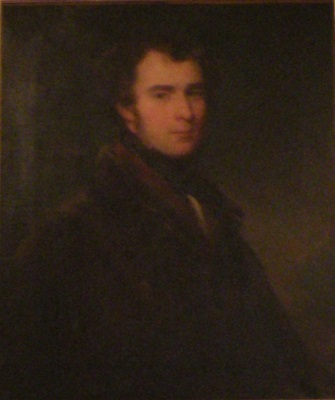 |
 Cutting from British Newspaper Archive |
|
There is no doubt that
Sarah Catherine was exceptionally proud of her father,
and in the late 1890s at an Exhibition in Barnstaple
she allowed a number of his works to be displayed with
great fanfare in the Local Press. At that time, his
works were highly valued, but by the time that she was
forced to sell them they appear to have slumped in
price.
|
| Henry Williamson and his
links to Manning's Pit In 1925 Henry Williamson married Ida Loetitia Hibbert, Sarah and Hugh's grandaughter (her mother was Margaret Dora, who had married her cousin Charles Hibbert against the wishes of her family in around 1889.) Williamson had met Charles Hibbert and his daughter while he was researching otter hunting for his book Tarka The Otter. Both Ida and Charles appear as characters in the book, and Ida's siblings were also later to appear as characters in some of his other books. |
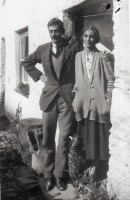 |
Sarah Catherine Hibbert (known as "Grannie" Hibbert) was very kind to the young couple, and Williamson was very fond of her. When he published The Village Book in 1930 he included a Dedication to her in the frontispiece. You can read more about this on our link above, and on the Henry Williamson Society website. We are grateful to the Henry Williamson Society for information that they have given us, about both the Hibbert family and Saki (H H Munro) as well as giving us permission to use the photograph of Henry and Ida Loetitia. After the sale of Broadgate House, except for an initial brief interlude, Mrs Hibbert was to spend the rest of her life living in No 2 Bellaire Cottages, just across the road from her former home. The Williamson family have confirmed that Henry and Ida Loetitia (known as "Gypsy") did visit her there, while he was researching Tarka The Otter. You can read more on our page about Henry Williamson. Manning's Pit, with its river and otters, was only a couple of minutes walk away - you just had to go round the bend in the road to the right of the cottages, into Northfield Lane, and there was the footpath into Manning's Pit. |
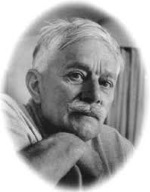 |
